Zen and the Art of Battery Replacement
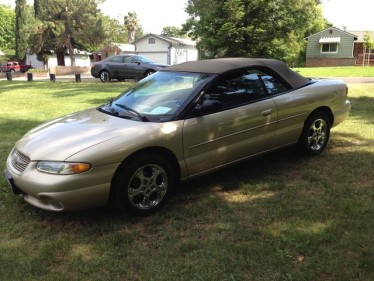
It is unseasonably crisp again this morning. The humidity slid back a bit yesterday, but the skies have cleared and it is cool for an August. There was no reason not to take the Bluesmobile to the dealer for the 90K Platinum servicing.
I wondered what the $700 surprise was going to be this month, and now I know.
I was going to talk to you about the Golden Era of auto ownership this morning, the string of fine German automobiles that marked my automotive interests this last decade, but that brought me around to the curious placement of the battery in the engine compartment of the 1999 Sebring convertible by the engineering staff at Chrysler.
I liked that car- though it was a compromise in many respects. It had to accommodate two sets of golf clubs in the trunk, four large humans in the passenger compartment, and enough performance to survive the lunatics on the Capital Beltway. In its defense, it looked nice, was fairly peppy, and the top came down just fine and allowed the breeze to move my hair despite the still-military obligation to keep it short.
I had given the late-model champagne-colored ragtop to my older son when he graduated from college. While perfectly serviceable, there are components that have regular shelf-lives, and the battery had to be replaced. He was living not far away in Arlington, and after trudging up from the Mr. Tire on Fairfax Drive with the heavy dead-weight, he called to tell me he couldn’t figure out where the battery went.
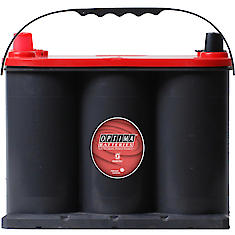
I confess I was taken aback. At a minimum, it is my opinion that all motorists ought to be required to swap out a battery and change a tire, so I assured him it was simple, and if he could get to work the next day I would swing by and take care of it. I was baffled that something so simple eluded his skills, and I blamed myself for being a Bad Dad and not teaching him something so simple.
It was not until I went online to find the shop manual for the Sebring that I realized the magnitude of the problem. The engineers had managed to create the sleek lines of the hood and front end by placing access to the battery- get this- inside the left front wheel well.
No kidding. That meant that the car had to jacked up, the tire removed, and an access plate unscrewed to reveal the dead battery. I don’t like having any car up on the jack, and try to minimize the amount of time my fragile body is exposed to the risk of having the automobile crash down on hands or head.
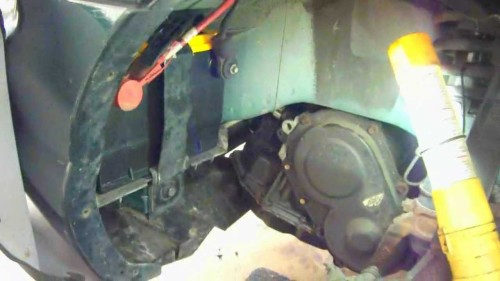
This was much worse. Once the tire and wheel were off the car, I had to get inside the well and start unscrewing the panel. Once removed, I then had to disconnect the cables and horse the heavy lead rectangle off the steel shelf before replacing it, all while trying to avoid bumping the car enough to cause the jack to collapse.
It would be easy if it were on the lift at the garage, but that was clearly not in the shade-tree mechanic’s handbook. In order to ensure that the whole process did not have to be repeated in case I goofed, I hooked the new battery up and put the tire back on the hub with a couple lug nuts, just in case getting behind the wheel shifted the weight enough to knock it off the jack.
It turned over just fine, so then there was the dismount, the removal of the tire- again- replace the access door and the fasteners, re-connect the battery hold-down and replace the battery heater blanket.
I got it all put back together, and then jacked the front end back down once I had the tire and lugs back on the car, tightening them in the star pattern Dad had taught me until everything was torqued up just right.
Damn, I thought, standing up on my aching left leg. That was really stupid.
If I am going to look at that new Dodge Challenger Hellcat, I am going to check where the battery is located before I get out my check-book. If it is in the wheel-well, I am going to keep looking and I don’t care how fast it can go from zero to sixty.
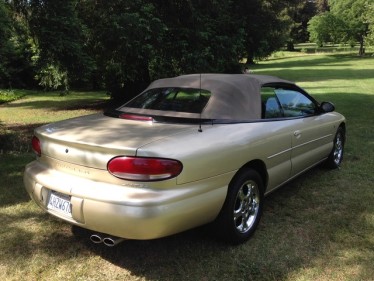
Copyright 2014 Vic Socotra
www.vicsocotra.com
Twitter: @jayare303
A Syclone Across America
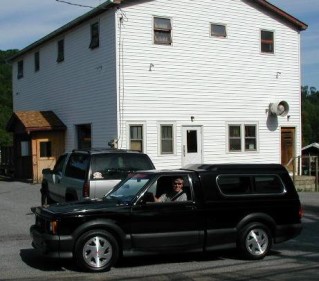
It was 2002. I was taking my son back to school at Ann Arbor, and I was going to stash the hot rod up in the Little Village By the Bay. I did not want to have the new paint on the fenders out in the Virginia weather, and Raven had a heated garage spot and the promise to start the heavily-modified 1991 GMC Sonoma that had earned the title of “The World’s Fastest Production Pickup Truck.”
I came to have it through the death of my Uncle Dick, whose great toy this was. He drove the truck at Mach speed to the dump when he needed to. His normal ride around town in the later days of his life were BMW autobahn rockets and Corvettes. He chose to live out in the hills of central Pennsylvania, and they use a lot of salt on the roads. Accordingly, though the truck only had 36,000 miles on the odometer in its 11 years of operations, the front fenders and undercarriage had some corrosion damage. That is why I had to turn it over to the Vietnamese.
The Vietnamese took the truck at 0845 on a mid-week Tuesday, and I crossed my fingers for luck as I walked away from the scene. The prognosis was uncertain but I had hope. It was finally time.
Early reconnoiters of the vicinity of my new post-marriage digs had revealed several likely several body shop cadre in the immediate vicinity. The leader was a lithe man in his mid-thirties named Thai, for the country where his refugee camp had been located. He sported an elaborate tattoo of a baby that climbed up out of the neck of his shirt, tracing the carotid artery and ending just under his jaw.
I wondered about that when I first met him at the body shop, which came with a recommendation from a good friend who was an Arlington native. Tattoos and burn-marks commonly signify membership in Asian gangs, and I tried to imagine which one. The “BTK” is a logical choice, since they have a national footprint, and operate out of Washington.
Ty is a fast talking young man. His office is hung with pictures from Vietnam, and there is a Buddhist shrine and the thick smell of incense. I don’t know it that is Ty’s choice, or that of his mother, who runs the business end of the garage. She is always there, in her little cubby, and her accent is thick.
Ty is almost always out and about, hard to pin down. He is a busy guy. His shop employs several gentlemen of a certain age who were likely all ARVN officers who had to make career moves after 1975. They are good craftsmen, and reliable in their work.
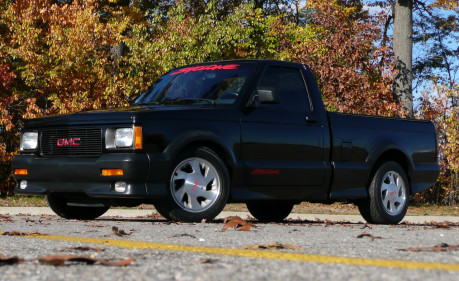
The truck was worth saving- so I would visit periodically over the weeks it took for the repairs to be completed. I couldn’t wait to get behind the leather-wrapped wheel again.
Here is how fast it is. The other evening, I had been motoring sedately down Glebe Road- a major north-south artery here in Arlington. It is an old road, sort of like Outer Drive in Detroit, which isn’t anymore. This one ran to the Glebe House of the Church of England in Colonial times but that died with the Revolution. But the road is still there.
Anyhow, though it is a four-lane road it is narrow and there are no left turn lanes. So if someone needs to turn across traffic, the left lane stops. I saw it happening up ahead and looked in the mirror to see if I could change lanes. I couldn’t, because a sleek black Corvette was coming up fast. I let him go by then goosed the accelerator and followed him, glued to the bumper, then took the left lane again when it was clear. We were side-by-side at the next light and I saw his window coming down.
I didn’t know if it would be a fist or a finger that emerged, but I hadn’t done anything unsafe and had given way. I hit the power button and lowered the passenger’s side window. A young man with long dirty yellow hair was at the wheel. He leaned out and said “Hey, Man! That’s a Syclone. Cool! My buddy had one of those!”
“You know what it is! Have a great day!” I yelled. When the light went green we punched it off the line and I had him by a half car-length going through 50mph when I shut it down and went back to being a safety conscious driver. We waved when he turned of onto Columbia Pike. I heard him shout “I gotta sell this thing- I can’t afford the insurance….”
The Truck ran great on the way up to Ann Arbor, though the oil pressure gauge was fluttering up around the 60psi mark for no discernable reason. Either a bad indicator or something impending, I didn’t know which. I decided not to worry about it. Maybe it was just the usual jitters starting a long trip and my son drove about halfway. We had two bouts of torrential rain, and he did well and I got to sleep for an hour.
I thought about a lot of things, in the hum of the tires and the rumble of the engine. Country music blasting….. By ten o’clock we had left the Potomac and were cresting Town Hill, elevation 1,250 feet and plunging into the hill country of Western Maryland, bound for Pennsylvania and points west.
A remarkable change of life, I thought. I always had to drive as the three of them slept. No more. It made it fun. We listened to his CD’s and played the music loud all the way, except for the Ohio State football game. How can they be playing the season already? It is too hot.
My son loved the power under his right foot. He was smooth and professional. He had a ball. There is nothing quite like the Syclone for under $70K these days. Even then, the power is not as raw as it is in this little black truck.
Sticker pirce? Back in 1991 it cost $28K, a not inconsequential sum in those days. Dick had his standards- he told me he also got a deal.
I recovered it from his house when the family was sorting out the estate for bottom blue book, since no one knew quite what it was worth and it needed some significant work.
Syclone production had been peculiar little experiment that GM had done at the dawn of the SUV era, cramming the soul of a race car into the sheet-metal skin of a little utility truck. The run was limited, so it is an odd duck, with low miles, and I was determined to save it for posterity. Jay Leno agrees- he has a specimen of the equally limited Typhoon, Syclone’s SUV sister of in his collection.
At the time it was introduced, the Syclone was the quickest stock pickup truck being produced in the world. The Auto magazines compared its acceleration favorably to a variety of sports cars, including the Corvette. In a memorable comparison test in Brock Yate’s Car and Driver magazine, it was lined up against a Ferrari and a Maserati.
Featuring a turbocharged 6-cylinder engine, all wheel drive, and 4 wheel anti-lock brakes, the specifications had more in common with a Porsche than most other pickup trucks.
I nursed it down from the mountains of Pennsylvania and did the necessary work to stabilize its disintegration. I replaced the racing tires with new original equipment and flushed the transmission that provides proportional power to all four wheels. With the restoration mostly complete, it looked nice, but it needs some tender care. Today, mostly we poked along on the new big racing tires and worried about the oil pressure gauge. It is not the greatest expressway vehicle since it was designed to eat Mustang Cobras off the line at stoplights all across America.
I bought one of the black t-shirts that commemorates the original sales pitch: “Syclone: 0-60-0 in 4.4 seconds. In the rain.”
Car writer Brock Yates reported that the Syclones, when new, were capable of “accelerating from 0-60 mph in 4.3 seconds and could do a quarter-mile run in 13.6 seconds at 93 mph terminal velocity. Speed was produced by flogging Mitsubishi TD06-17C 8 cm² turbocharger and Garrett water/air intercooler attached to a 4.3 LB4 V-6 engine with unique pistons, main caps, head gaskets, intake manifolds, fuel system , exhaust manifolds a 48mm twin bore throttle body from the 5.7 L GM Small-block engine.
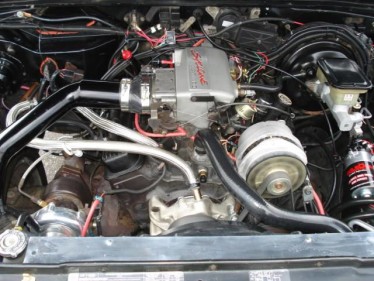
All 2,995 Syclones had a GM 700R4 four speed trannie and a Borg-Warner all wheel transfer case to split torque with 35% forward and 65% to the rear wheels. The Syclones featured sport modifications to the standard suspension, and were the first production truck to receive a 4 wheel anti-lock braking system.
They were special- I discovered that when I had a custom replacement manufactured for the stainless exhaust system out in Loudoun County, the only place I could find to have the work done, or the sand-blasting on the undercarriage that could only be done in Staunton, VA.
The interior on mine is flawless. I needed- then and now- to keep it out of the sun and out of the salt bath of the Northern Virginia winter.
Pennsylvania was boring. I have swept up and down these hills so many times I know them like the back of my wrinkled hands. I swept through the Hole in the Wall under Alleghany Mountain, and past the crash site of Flight 93. There was a new bill-board that offered charter tours of the insta-shrine.
Then on past Pittsburgh and the big construction zone that occupies the last thirty miles to the East Gate of Ohio, where the land becomes level and featureless. That is normally where I fall asleep on these trips, but we had tunes and conversation about the flat land and rich soil and our roots down on the Ohio River Valley.
There was no point in looking at the fuel gauge, since that hadn’t worked since the tank was replaced. I had to keep track of the fuel level by the push-button trip indicator and made a point of refueling with high-test every two hundred miles. I was not sure how big the replacement tank was, and was not interested in finding out to the liter how much it actually held. I calculated the average highway mileage and we re-filled every two hundred miles, whether I needed to or not.
The oil pressure was something else to watch. It had a tendency to go crazy when I operated the truck in rapid acceleration mode and I did not know what it might actually mean. It could mean that I would blow the seals on the 4.5-liter turbo-charged six-cylinder engine. We needed no breakdowns here in trackless Ohio, no holiday with a surly mechanic interfering with his dinner and mine a state away.
Most of the 700-odd miles we kept it at the lowest possible RPMs and for the first time in my life actually we did the speed limit on the Pennsylvania and Ohio Turnpikes.
We made it to Ann Arbor and unloaded the truck into his new digs. We ate at the Fleetwood Diner, a disreputable establishment downtown that has been poisoning patrons since before I went to school there. I told him to have a great semester, work hard and do well. He laughed and said “Sure, Old Man. I am right on it.”
I kept the truck’s blunt black nose pointed north. I found National Public Radio on the dial and listened to All Things Considered. NPR faded as I rolled through Alma, where there is a fine little college. Lady Bird Johnson’s legislation banning bill-boards along the interstate system did not affect this route, and there was advertising aplenty for sport outfitters and outboard motors and boats and snowmobiles.
I kept the Mackinac Bridge on the nose, and kept my eye on the oil pressure. But as I headed north in Michigan I got tired of the aggressive SUVs and sedans passing me. I was north of the Special Enforcement Zone at Clair (“Gateway to the North!”) and rolled past one of the official-only access cuts through the pines. No cop was there, and there wouldn’t be another place for one to lay in wait for a couple miles or so.
So on that lonely stretch of US-127 before it joins big Interstate-75 my foot got itchy.
I was close enough to my destination that I was pretty sure I could coast in to The Little Village By The Bay, if I got the knots up high enough. I tromped the accelerator and the truck leapt forward with a snap. I got to 95MPH and held it there. The pines along the side of the road disappeared in a blur of green and the road narrowed to a point of black asphalt before me. The dials on the turbo-boost shot up into the +15PSI range and the tachometer raced north to 4,500RPM. I held my breath, wondering if everything would hold together.
It seemed to. I slid back down around the speed limit and surveyed things. It was all working fine. I ran it up again, back pressed into the contoured racing seat. Then I went for it. From a flying start the little truck shot forward, dials racing around, the whoosh of the inter-cooled engine combining with the roar of the turbocharger. The red speed dial arced sharply up, 80, 85, 90, 95, faster than you can read it, pinning me to the seat.
Then over a hundred, the magic number and I held it there for a several seconds. It was a strange dreamy feeling, alone in the cone of hurtling empty roadway, measuring the sense of it, 105, wondering about the physics of it, the cams and parts and bearings spinning faster than thought, the feel of the road through the tires and the struts and the shocks. Straight and level. Comfortable.
The instrument panel was calmer than I was. All the other needles, oil pressure, temperature and ammeter stayed constant. I eased my foot off the gas and the individual trees became distinct once more. The black rocket slowed down through the 90’s and to loaf along at 2000RPMs, sedate at the speed limit.
So I am assured that it retains the quickness for which it was built, and the excitement that shoots up nerves to the brain from foot and wrist.
So into my Father’s garage went Syclone. He has vowed to start it every week and move it so the tires don’t get flat spots. Sooner or later I will get back to it, in this lovely little village by the Big Water.
When I shut the garage door and the truck’s aggressive little snout disappeared I was reminded of the words spoken by one of the last skippers of the battleship Iowa. He said at the decommissioning ceremony that it might not be the last time she would be needed.
“Rest well, yet sleep lightly,” he said. “For your Nation may need you again.”
That is the way I feel about Syclone, which is now sleeping under cover at Refuge Farm, ready for another round of refurbishment and a trip to the Culpeper Car Show next 4th of July. Somewhere, there lurks a Mustang that needs to be eaten for breakfast. Maybe in the Spring.
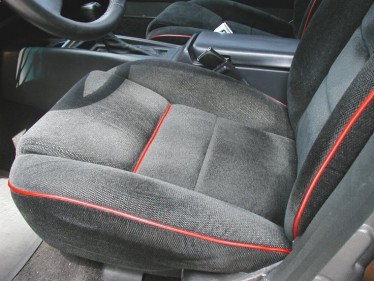
Copyright 2014 Vic Socotra
www.vicsocotra.com
Twitter: @jayare303
Grassers and Gassers
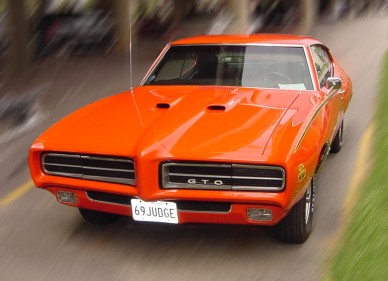
(1969 Pontiac GTO Judge, named for the comic mantra on the Rowen & Martin Laugh-In television variety show. Photo Pontiac Motor Division. RIP).
OK- too strange out there, between the Ebola outbreak and politics as usual. There are convoys of armored limousines all over town and anyone with a brain is staying away from the District while the various heads of state are motoring about, clogging the streets with roadblocks and security checkpoints.
The AMC Spirit was a last hurrah for me and the brand. Great little ride. My brother’s last AMC was the bizarre Pacer, which evoked the memories of Dad’s early renderings:
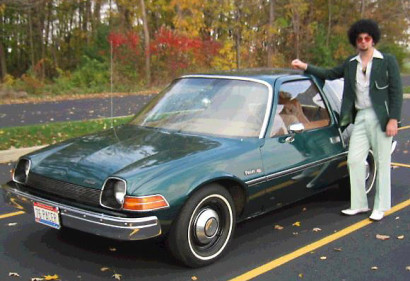
Judge for yourself:
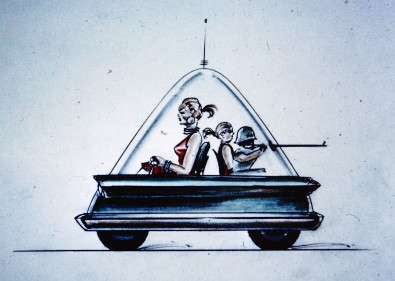
The real Judge wrote me over the weekend with some recollections of his car days. I had intended to write about my days as a family man and Fleet owner of truly boring automobiles- it started with one of the last cool AMC vehicles that came with my new bride- an AMC Spirit- that we shipped to Honolulu when the Delta 88 Royale battle-cruiser stayed in the warehouse Up North on blocks to save the tires. I ran the gas tank to “empty” and choked out the carb on the 170-net-horsepower 350 cubic inch V-8 engine with a blast of Diethyl ether, which in addition to being useful as a starter fluid, has a long history as a medical anesthetic.
I figured good for us, good for the Royale. I eventually drove that car again, and into the ground, but the new and growing family required affordable and sensible cars, and I had to put the automotive passion aside for a couple decades. In the mix of marital vehicles was a VW Rabbit, a VW Beetle convertible, a vast used Buick station wagon, a Taurus wagon, a Mercury Villager mini-van, and a peppy little Dodge Shadow, a used family Caddie DeVille diesel, and finally the car that survived the marriage, a Chrysler Sebring convertible.
Some of the cars were interesting, most were not. So they are going to get short shrift, except to note that I got used to trying to get 100K miles out of the rides, and also got used to sitting around Dealer maintenance shops.
So we are not going to let the muscle era go just yet. The Judge wrote me with some memories and a teaser for something I might really want to own. He started out with a Pontiac, which reminded me that our cars did not have to be in motion to be complete entertainment venues:
“Vroom,” he started. “We all have the car memories, mine: (1) getting the goodies in a 1964 GTO convertible that belonged to the rich guy who left it parked outside the party…no gasoline was burned in the process (2) the family Ford Falcon which had absolutely the best door latch for opening beer bottles (Goebel 22 in GIQ’s…a Michigan legend). At a grasser (a term you Detroit guys may or may not know) in Ingham County, if your car couldn’t open the bottle, you were SOL. I frigging hate getting so old.”
We did some back and forth on the issues- I fondly remember the Great Imperial Quart bottles that Goebel beer came in- more ounces for the buck was important in high school and college- and “Grasser” used to be a term for parking out in someone’s field and getting shit-faced on alcohol, not “grass.” Strictly speaking, half barrels of draft beer were also fun, but regardless of whether you were in Ingham or Oakland County, cars were how you got to the field to drink.
Out in the wilds of Troy “City of Tomorrow Today!” there was a field we liked. It had a crater of moderate dimension on it which we attempted to fill up with beer cans, which may today still be an aluminum deposit under the SS Kresge World headquarters when it needed one.
We got there via Woodward Avenue to Big Beaver, by the way, and it was not far from the Fox and Hounds road house and the site where the Bloomfield cops nailed me in Dick’s Charger.
Which brings me around to the tantalizing link that the Judge sent to the most remarkable thing I have seen come out of Detroit since the Dodge Viper. Muscle cars dead? Electric cars and hybrids the way of the future?
Pish Posh. Check this out about the Dodge Challenger Hellcat, coming to a dealer near you soon:
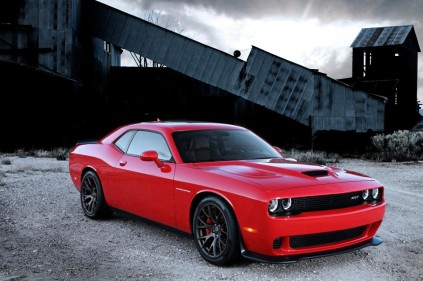
“No car guy has an excuse to stay flaccid with this strapped to his ass. MSRP, though, near $60K might make it an expensive fling…but just think of the Prius drivers you can piss off:”
http://www.motortrend.com/roadtests/coupes/1407_2015_dodge_challenger_srt_hellcat_first_drive/
The Hellcat model comes with a 6.2-liter supercharged V-8 making 707 hp and 650 lb-ft of torque and do 0-60 mph in 4.1 seconds with quarter mile E/Ts of 11.2 seconds on the quarter mile with street tires (Pirelli P Zero is standard).
The introduction of the hellcat makes me think that:
1. Car people still exist.
2. There could be hope for America yet.
Copyright 2014 Vic Socotra
www.vicsocotra.com
Twitter: @jayare303
One Hundred Years
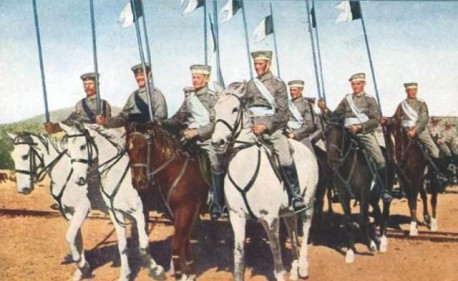
(German mounted lancers- Uhlans- who opened our version of the Hundred Year’s War.)
I am not going to stop writing the car stories, but there is a reason I am going to take a break from the subject today. As you may recall, we lost our last American veteran of the Great War last February. His name was Frank Buckles, and he was 110 years of age when he departed. I was amazed by his survival through all the subsequent history. Grandpa was a doughboy, too, and he only made it to 1944.
So much insanity has transpired since then, most of it directly attributable to great policy mistakes that began building after the Franco-Prussian War of 1870, and the humiliation of a generation of Frenchmen.
Jeff Lipkes summed it up pretty nicely yesterday. He knows this stuff pretty well- he is the Princeton PhD who wrote “Rehearsals: The German Army in Belgium, August 1914.”
He had a shorter piece in The American Thinker yesterday titled “The Lessons of World War One.” I knew some of them already. The Great War changed everything, ended empires, transformed a world and killed millions. So many millions, in fact, that Jeff suggests that historians cannot agree to the nearest ten million how many deaths by violence have resulted since.
At 8:05 AM two Belgian border guards at the German border were approached by a squadron of German Lancers. Here are the words that began the end of the world:
Belgian guard: “Belgian frontier!”
German officer: “I’m perfectly aware of that. But the French have crossed the border and we’re going to continue on our way.”
A paper was handed over from the man on horseback to the man on the ground. The Belgian guards read these words: “It is with greatest regret that German troops find themselves forced to cross the Belgian frontier.” The remainder of the message urged the Belgians to use discretion and save their country “from the horrors of war.”
As we know, it did not work out that way. Initially there was no resistance to the German incursion, and other formations of Germans crossed the frontier over the course of the morning, including troops on bicycles. The Belgian High Command was notified, and the message that an invasion had begun arrived at the Foreign Ministry during the lunch hour. The news was cabled to the Belgian legations in London and Paris.
And so the news spread that the War To End Wars had begun.
The Belgians were determined to exercise discretion, and the Rules of Engagement, circa August 1914, were not to trifle with the Germans. This war thing is an emotional business, though, and almost exactly a century ago, to the minute, an excited Belgian trooper named Antoine-Alphonse Fonck fired on some Uhlans near the town of Thimister.
German cyclists fired back and killed him.
And so it began. And it really hasn’t ended yet, has it?
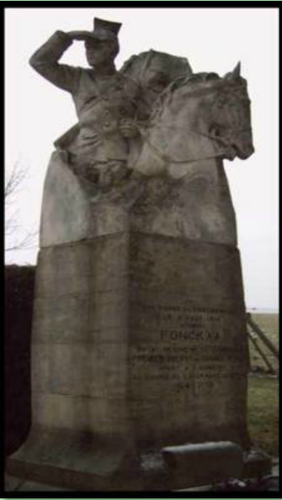
(Antoine-Alphonse Fonck memorial on Charlemagne Boulevard in Thimister, in Belgium’s Liège province).
You might like Jeff’s whole article, and a short account of the spectacular mis-steps and might-have-beens that could have altered the horror that produced our modern world:
http://www.americanthinker.com/2014/08/the_lessons_of_world_war_i.html
Copyright 2014 Vic Socotra
www.vicsocotra.com
Twitter: @jayare303
Rice Burners
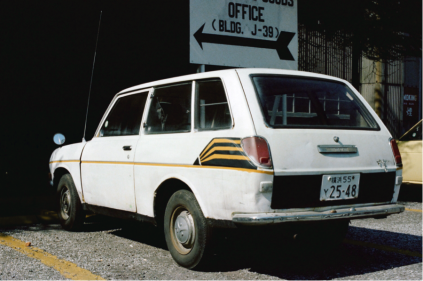
At some point I know we need to address the Japanese imports. Like the Germans, who emerged from the ashes of World War Two to produce quality cars like the legendary Mercedes line, the Audis and Bimmers, the Japanese did something even more fundamental- they literally transformed the American car market, and occasionally record sales in North America that top the production of the Big Three.
Or Big Two, whatever they are at the moment.
I periodically rent Camrys and other low budget sensible Japanese cars from Mr. Hertz and Ms Avis. I find them generally underpowered and anemic in the curve, and don’t like them much, but I certainly respect them. I have owned many more German cars- three Volkswagens and four Mercedes- but only one Rice Burner. It is pictured above, and therein lies the story. In this shot it is parked over at Building J-39, the personal property office on the naval base at Yokosuka, Japan, south of Yokohama and the vast sprawl of Tokyo.
My son is there now, so I have been thinking about the times I spent on the Kanto Plain in the days when dinosaurs roamed the Ginza.
My ride at the time was a 1968 Toyota Publica, which was manufactured 1961 to 1978, and which incorporated the complete philosophy of W. Edwards Deming, the American engineer who made a significant contribution to Japan’s later reputation for innovative, high-quality products, and for its economic power. He is regarded as having had more impact upon Japanese manufacturing and business than any other individual not of Japanese heritage.
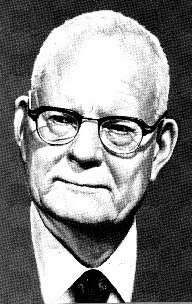
(Dr. W. Edwards Deming. Photo Wikipedia).
The Japanese economic miracle stems in part from their ability to incorporate elements of other cultures and make them uniquely theirs. Deming’s lecture to the Daibatsu leadership in 1950 summed it up like this:
1.That the problems facing manufacturers can be solved through cooperation, despite differences.
2.Marketing is not “sales,” but the science of knowing what people who buy your product repeatedly think of that product and whether they will buy it again, and why.
3.That In the initial stages of design, you must conduct market research, applying statistical techniques for experimental and planning and inspection of samples.
4.And you must perfect the manufacturing process.
The Publica was a case in point. Conceived as a family car to fulfill the requirements of the “national car concept,” it was the smallest Toyota car during that period. It came in several flavors of two-door vehicles, including the base sedan, convertible, pickup and station wagon.
The design concept stipulated that the Publica have a maximum speed over 62 mph, weigh below 882 pounds, and drink fuel in a parsimonious manner, getting more than sixty miles a gallon at 37 mph on a level road and not in a benjo ditch. It was also supposed to be rugged, not requiring major repairs for the first hundred thousand miles.
I can’t tell you much about the engineering, since I never did change the oil or buy a new battery for the rugged little car. But it was a great way to get around.
The name “Publica” was chosen with reference to the English phrase “public car,” sort of like Uncle Adolf’s goal for the original VW Beetle. Unfortunately, due to the lack of exact distinction between the “l” and “r” consonants in the Japanese language, the name can be sometimes misinterpreted as something closer to “paprika, and is transliterated “パブリカ” in Katakana, or literally paburika.
I ran across the following in my digital files the other day. It is from 1979, the year the Soviets went into Afghanistan, and a couple minutes after we got back from the Indian Ocean and those whacky Iranians and their crazy Ayatollah. I have changed nothing to protect the innocent.
“It had been a busy week, and we were leaving again soon. It meant there was madness in the air, the madness that went with the going-to-sea, maybe going-to-war mind set. In the grips of that, we found our heroes enjoying their last hours of liberty with gusto.
They had found themselves delivered back to the tender mercies of Ma Midway (CV-41) after a remarkable line period. A busy workday on Friday, hauling gear up the ladders and into Ready Room Two. It could have been a night for a nice dinner and quiet contemplation of the rigors to come.
But Fridays are The Night at the Officer’s Club at Atsugi Naval Air Station, and thus it was time for a pre-disco dining extravaganza out at Ruth’s house. Ruth is a Navy Nurse, and she is a very nice person who takes care of Her Boys. Gaijin women who are not already attached to someone are a rarity on the Kanto Plain, which helps account for the beauty magnification factor. West of Hawaii, 5’s become 8’s, and 7’s become 10’s.
Fact of life. Ruth handles it well, though, and has adapted to the situation by more or less adopting us as her own personal fighter squadron, which can be a useful thing for a single woman.
She feeds us and leads us around for our own protection. She is a queen, she knows it, and treats her subjects with an even hand. Neat lady. What’s more, with her hefty nurse’s Basic Allowance for Quarters, she can live off-base out by the Hayama resort on the Sagami-wan, in a little house halfway up a hill. It has a splendid view, made the more so by our constant exposure to the gray steel windowless walls of my current abode. It is a general delight to be there.
This night the pre-Disco meal was chicken-stuffed crepes, hearty neo-Caesar salad and wonderful warm loaves of bread. The Japanese have great bread. They encountered it for the first time after the war, and discovered it had many uses. They even decided the American variety was too bland, and, in typical Japanese fashion, looked around for the best bread in the world and found it in France. Voila! Here it is! The ambiance was delightfully non-industrial, the food was outstanding, the wine divine. If anything, the bottle of rum that Scooter poured into the dessert daiquiris was superfluous. But good.
We have a variety of cars strewn up and down the hill. Cars are one of the little quirks here. First, you drive on the wrong side of the road. That is sorta cool.
Second, the cars are only worth the amount of Japanese Compulsory Insurance that remains on the policy. There is a public law that any vehicle over four years of age has to go through a rehabilitation and certification process that in effect costs more than buying a new car. They call it the Beautification Law.
Due to the Status of Forces Agreement (SOFA), we are exempt from the law and we took full advantage of our special status.
Accordingly, if you see a trashed-out car hurtling down Telephone Pole Road headed for Yokohama, you can be sure it is one of us. I own a clapped-out1970 Toyota Publica mini-wagon with three months left on the policy, making it worth exactly 42,000 yen. I had artfully painted the squadron tail flashes on the sides. Although you could see the roadway through holes in the floorboards, I considered it a beauty.
I have been stashing the little gaijin-mobile over at Ruth’s during our at-sea periods. It has an old battery that has a tendency to go dead as a doornail. So as our group was leaving the house I enlisted the hearty bodies of L.P., Jambo, Space, Splash, Scooter, Scotty, and Nasty in levitating the little econo-box out of the driveway, bouncing it backwards over the curb.
“Cut the wheel! Cut it hard port!” someone shouted. I wondered if they were talking to me….
A near run into the benjo ditch on the other side of the road, a quick transition, and I almost hit L.P’s 911 Porsche Targa. He had brought it over with his household goods with the idea of selling it on the local economy.
The Japanese love hot cars. Given the fact that traffic moves about five miles an hour during the day, it is amusing to watch the Jags and Mercedes creeping along. I decided a look behind might prove helpful as I navigated backwards down the steep hill. The trick was to get the thing rolling and pop the clutch, using the motion of the wheels to turn the engine.
Splash stayed with me almost the whole way down the hill, till I figured out it was just not going to start in reverse. I swerved into the curb and got it rolling forwards. I jammed it into second gear with my left hand and slipped my foot of the clutch. Well alright! The little monster started right up. I put the clutch in, kept the revs up, and hoped it wouldn’t die before I ran out of incline. Splash watched me disappear around the corner, about a half-mile downhill from his car.
“Hey, thanks Splash!” I yelled into the slipstream, “See Ya!”
I reached the traffic light at the bottom on the hill and stopped. It was red, and it was the right thing to do so I pulled over, foot on the gas, way short of the white line so as to have a fighting chance if the car crapped out. Space’s patented Space Shuttle van pulled up next to me. Scotty leaned out the passenger side and inquired if it was O.K.
“No sweat” I replied, about the same time the Nasty-mobile showed up and intentionally read-ended them. I saw the impact push the van about five feet down-slope. Space crammed it into reverse and hit the gas. Nasty sort of got pushed back uphill. Tires were smoking on the wet pavement, and the sound of the vehicles rubbing metal was real interesting.
I noticed Ruth’s horrified face in the passenger side of Nasty’s car. The light changed, Space went into first and roared off toward Atsugi. Nasty appeared to take it as a challenge and vanished in pursuit. I had to keep the revs up anyway, so what the hell….
We joined the frantic procession of normal traffic out on the highway. The road is narrow, as they all are in the Kanto Plain, and has steep open benjo sewers on each side. This doesn’t keep the locals from driving at breakneck speeds and performing outré maneuvers.
About the only thing it does do is keep them from driving drunk. You see, up till about fifteen years ago, drunkenness was a perfectly legal excuse for accidents.
Unfortunately, with the onset of mass access to cheap reliable cars, the massive casualties this policy encourages made it obvious that this remarkable notion had to give way to a more rational approach. As they so often do, once the Japanese make a decision they make a tough one. Even a beer – a single beer – will make you legally drunk. Should you cause an accident, or hurt someone, you may as well throw away the key.
Unfortunately, we were drunk Yankees, driving $175 cars, in a toy-sized land.
And it was off to the races. My first indication of this was Jambo flying by into oncoming traffic. He cut off a taxi and gained the lead. We rounded a bend, the line slowed down, and out of nowhere flashed a yellow Porsche 911, beating out the entire crowd and disappearing into a curve. This was an outrage too great to be borne …. it was pandemonium on the roadway …. the drivers were flying their aircraft, unconscious of the civilian life around them. We approached the first light on the way into town. Red. The racers were in line astern. Oh my goodness…I saw the green station-wagon’s back up light go on; in an inexorable chain reaction the cars bumped, jumped, and began to move toward my grill…the Space Shuttle into first!
Tires smoking, the line begin to move out into the intersection … the taxi behind me is keeping his distance … the light goes green and the race is on … it’s a cacophony of straining water pumps, abused gear boxes, over-revved little engines.
I am working with my handbrake only, to avoid taking my foot off the accelerator …. Around a downward curving turn, into another red light …. the Porsche stops …. the Jambo Special goes left, the Nastymobile to the right, drifting through the red signal with tires burning …. past two amazed Japanese policemen …. Oops …. I try to look inscrutable …. a crowd of pedestrians are bent over in amazement …. their mouths are beginning to work as the signal changes …. see ya! …. the racers roar down the narrow Ginza …. hard port! A light, hard brake, then onto R-16, four lanes and it is all guts and drag-racing technique. The last quarter mile to the gates of the Atsugi Naval Air Station…. hard starboard and into the chicane …. I stop the car, dim my lights, and the Marine on duty salutes me. I turn on the lights, turn right and follow the slow procession up to the Club.
We park the cars giggling like the drunken idiots we undoubtedly are. A leisurely stroll up to the doors where I can hear the sound system blaring some repetitive beat. On the way in I see one or the guys from Attack Squadron 56.
“Hey Vic” says one of them. “How’s it going?”
“Oh you know” I say with a negligent wave, “There just ain’t nothing to do in Japan.”
“Yeah,” said Jambo. “Except for maybe fifteen years if you get caught.”
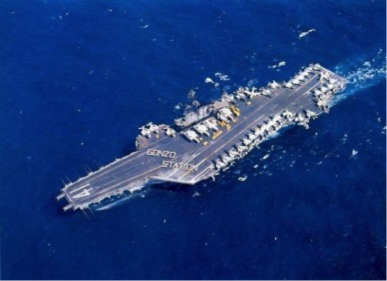
Copyright 2014 Vic Socotra
www.vicsocotra.com
Twitter: @jayare303
Cannonball Runners
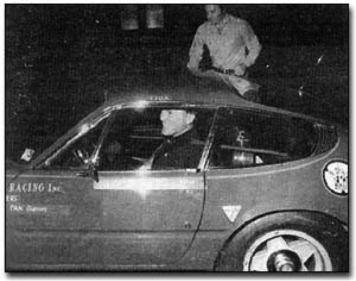
(Author and activist Brock Yates fills up the Ferrari Daytona piloted by racing legend Dan Gurney on the Cannonball Baker Sea-to-Shining-Sea Memorial Trophy Dash, 1975. Photo Car and Driver Magazine.)
A pal wrote me about a scheme to deliver recreational vehicles to Snowbird destinations down south, saving the owners the inconvenience and expense of driving to their winter roosts, and cheap travel to those willing to drive.
I am increasingly thinking about winter relocation myself, and living on a fixed income, so the idea was appealing. And that led to a contemplation of the Big Sedan era of my life- well, the real phase of it, though there is an ominously large P-71 Police Cruiser parked around here somewhere that I bought to celebrate the Age of Rolling Steel.
The Gas Crisis had provoked my experiment with the Chevy Vega Kammback GT Wagon, but I was spending a lot of time on the road, between covering accounts at several colleges in South East Michigan and Northern Ohio. And ski patrolling in the winter up at the Otsego Ski Club in Gaylord, Michigan. Dad still had his auto-industry contract and got a new car as part of his deal, but Kelvinator had been sold off in one of the consolidations that would eventually result in the death of American Motors and the terms had changed.
On the up side, he could pick the car, and it didn’t have to be a Rambler. On the down side, he had to drive it for two years before getting another one. What was interesting was that he had the option of buying the car for bottom Blue Book value, and that is how the Vega went to brother Spike and I found myself behind the wheel of a 1973 Chevy Caprice Classic.
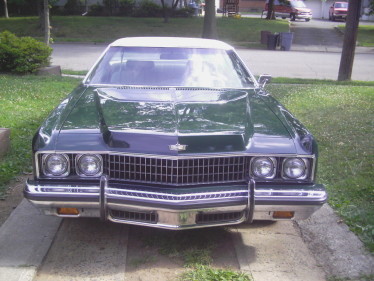
The Caprice (71-76) was the biggest Chevy ever made, so it was quite a change from the Vega. Rolling along the interstate I felt like quite the grown-up. I quit my job in 1975, and decided to spend some time driving around the country. I had ten grand in the bank, no debts, the car was paid for and life was large. So what if the gas was sort of expensive? At least it was available again, and the full-size Chevys (Biscayne, Bel Air, and Impala) were the most popular American car on the road.
Of course, like the drive-away snowbird car deliveries, you did not have to own the ride in order to take road trips. Remember a thing called the “drive-away service” that used to appear in the want-ads (remember life before Craigslist?).
The point was to link auto owners with low-budget travelers to take cars to distant places for the just cost of the gas. It used to make a lot of sense in the days when we were splitting our time between Ann Arbor and the distant Utah resort town of Park City. We would leap into the car with a cooler and twenty hours later would have left the Motor City far behind, and arrived in the snowy uplands of the Great Intermountain West.
We drove fast, and for the most part, accurately.
My favorite story about life on the road was the old Brock Yates cross-country race that ran from the Red Ball Garage in Manhattan, NYC, to Redondo Beach just north of LA. The winner was the one who had the fastest elapsed time over the public highways.
It is a measure of how things have changed that such an enterprise these days seems reckless and irresponsible- like the winning time one year by pro-racer Dan Gurney in which he modestly explained that he “at no time had ever exceeded 175mph” in his Ferrari Daytona to post the winning time.
The race itself was an act of guerrilla theater named for the famed distance driver Erwin George “Cannonball” Baker, whose exploits in the pre-interstate America were legendary. In 1933, Baker had driven coast-to-coast in a Graham-Paige Model 57 Blue Streak 8, averaging better than 50 mph for the trip. His cross-country record of 53 hours 30 minutes stood unchallenged for nearly forty years.
Hence the inspiration for the “Cannonball Baker Sea-to-Shining-Sea Memorial Trophy Dash” and the Cannonball Run movies with Burt Reynolds that followed.
Growing up in Hot Rod Detroit made us all, by definition, car people, boys and girls alike. Perhaps the testosterone coursing through our veins had something to do with the boys acting out a bit. My first speeding ticket was awarded by the Bloomfield Hills cops to me after piloting Dick Areen’s Charger R/T 440 at 120 in a 50 zone, and I was nothing special, except one of the first in the Class of ’69 to discover the wondrous properties of the police Visual Average Speed Computer And Recorder- VASCAR.
So there it is, finally. Dick had picked me up on a Saturday evening to show me the new wheels his Father had acquired at Chrysler, and he had a bottle of vodka with him. I had a full pack of Marlboros and the night was at our feet. The potential for fun was virtually unlimited. Unknown to us, the Bloomfield Hills cops had likewise acquired VASCAR, a technical innovation at least as significant as the Hemi engine, and when Dick graciously offered me the opportunity to test out the car, I drove right into the waiting trap.
Dick was a smart guy, and he had the forethought to bring the bottle of vodka with him under his coat when the cop put us in the backseat of the police cruiser, so we did not have MIP (Minor in Possession of Alcohol) in addition to the frankly amazing ticket, and the reverberations of the incident took several months to get through- like the rest of my probationary period as a first year driver. Oh well.

There was a lot of tension between the enforcement and regulatory community and the Car People. Downright animosity existed between motorsports enthusiasts and activists like Ralph Nader and his acolyte Joan Claybrook. Joan was a particular bur under the saddle of Car and Driver Magazine’s editor Brock Yates, who would have termed Joan the very manifestation of the Nanny State had the term existed then.
Claybrook later ran amok as the Administrator of the National Highway Traffic Safety Administration under Jimmy Carter. Her advocacy of all sorts of very practical things on the highway was catapulted to prominence during the fuel crisis, and Dick Nixon’s imposition of a national 55mph speed limit.
As we found out later, the double-nickel speed limit contained in Nixon’s National Maximum Speed Law was actually slower than the quickest average speeds of point-to-point travels of Cannonball Baker without Interstates.
The enthusiast community was pitted in direct confrontation with the new speed limit, which was viewed across the chasm of the Red State/Blue State divide of the day. There was a spirit of insurrection in the air, and Yates displayed it in each monthly issue of his irreverent magazine.
In the interest of fairness, I hasten to remind you that Nixon was a Republican of some kind, with distinct statist tendencies, a tradition carried on by other Republican chiefs.
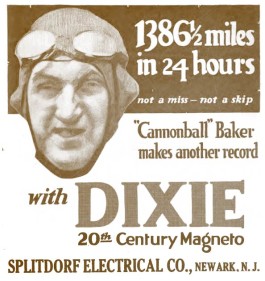
“Car and Driver” Magazine was a progressive enthusiast rag edited by literary bomb-thrower Brock Yates that went ballistic over the loss of fun with the new speed limit, which was piously supported by the insurance industry, and Ms Claybrook in particular. She wanted ugly bumpers and those pesky seatbelts and lower speed limits to protect us from ourselves.
The Sea-to-Shining-Sea race was conceived by Yates in 1971, and gained new life with the fuel crunch in ’73. The Run was intended to commemorate the exploits of the legendary driver Erwin George “Cannonball” Baker, famous for his record-setting point-to-point drives east and west and north and south. In his storied career, he made 143 cross-country motorcycle and automotive speed runs totaling about 550,000 miles. In his time he beat locomotives across the country, drove a loaded two-ton truck from New York to San Francisco in five days, seventeen and a half hours.
His most famous trip was a 1933 New York City to Los Angeles dash in a Graham-Paige 57 Blue Streak 8, establishing a coast to coast elapsed time record of two days, five hours and five minutes that stood unchallenged for nearly 40 years.
Yates was after fun- and publicity- with the Trophy Dash. It was intended both as a celebration of the inherent safety of the Eisenhower Interstate System and a challenge to the stricter enforcement of traffic control capabilities at the time.
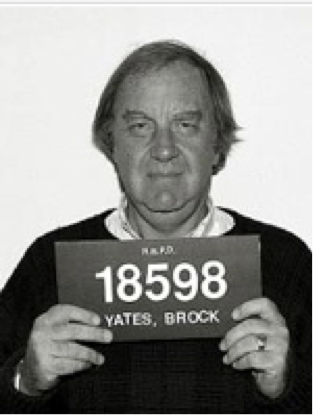
The first running of the Trophy Dash was held in May of 1971 and the winner was a 1971 Dodge Custom Sportsman van, called the “Moon Trash II.”
The race was run four more times, in November of 1971 and ’72, then went on hiatus until 1975 when I had the Caprice and the highway to myself. A final iteration was run in April of 1979, the very month I shipped out for Japan. I always wanted to participate, and the accounts of each one of the races was riveting, and none had a casualty of which I am aware. Naturally, advance publicity of a crowd of lunatics hurtling West needed to be avoided, lest Smokey be perched waiting on every highway overpass.
The most remarkable effort was by Yates himself riding with racing legend Dan Gurney. They pulled into Redondo Beach with an elapsed time 35 hours and 54 minutes to travel the 2,863 miles. That is an average speed of approximately 80 mph, while collecting only one ticket along the way.
Dan later said that snow in the Rockies cramped his style, since the overall record for official Cannonballs will stand (forever) at 32 hours and 51 minutes by Dave Heinz and Dave Yarborough in a Jaguar XJS in the last Cannonball race held in 1979.
And so, into the ashbin of history for a great party on wheels, and welcome to the grim grayness of the Safety State. There were other, unsanctioned running of the legendary Cannonball Run. In 2006, Alex Roy and David Maher flogged a heavily modified BMW M5 across the country in a new record time of 31 hours and 4 minutes.
Not to be outdone, last year Dave Black, Ed Bolian and Dan Huang drove a Mercedes CL55 AMG modified with two additional 22-gallon tanks in the trunk and shattered that mark, taking only 28 hours, 50 minutes and 30 seconds to travel from the Red Ball Garage in Manhattan to the parking lot of the Portofino Inn at Redondo Beach in California.
That record will probably will not stand forever, since they hit traffic leaving New York City.
But those feats notwithstanding, there was a certain whimsy in the original races. I mention that in the context of the 1972 drive-away experience in the Trophy Dash: four college students answered an ad to ferry a Caddy Coupe de Ville across the country, promising the Snowbird owners they would “not exceed the speed limit” and “drive only during daylight hours.”
They finished second in the race, behind Brock Yates and Dan Gurney, who drove a Ferrari Daytona, and ahead of a van that had been modified with a two-hundred gallon fuel tank to minimize gas stops.
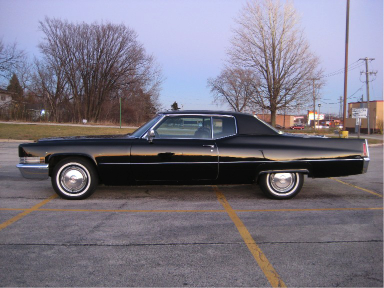
The caption under this image of the delivery Caddy was: “Didn’t burn a drop of oil on the 40-hour trip.”
Don’t accuse me of living in the past. I just couldn’t drive 55, not then and not now.
I was in the Navy by the time I got tired of the Caprice and replaced it with the biggest goddamn Oldsmobile they ever made- the Delta 88 Royale. I had that car for almost twenty years, ten of it in storage when I was overseas. What a ride. Damn, what a ride!
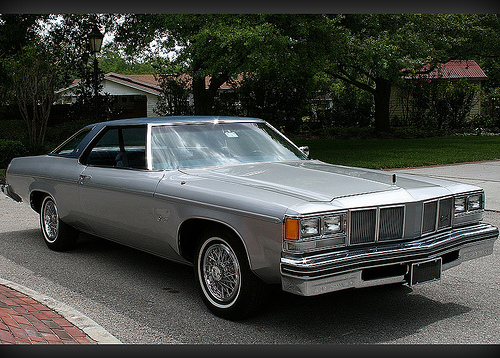
Copyright 2014 Vic Socotra
www.vicsocotra.com
Twitter: @jayare303
Getting Small
“I do take one drug now – for fun – and, maybe you’ve heard of it, it’s a new thing, I don’t know if you have or not. It’s a new thing, it makes you small. [ indicates size with fingers ] About this big. And, you know, I’ll be home, sitting with my friends, and, uh.. we’ll be sitting around, and somebody will say, “Heeeyyy.. let’s get small!”
– – Comedian and Banjo Picker Steve Martin from his monologue “Let’s Get Small” (1977)
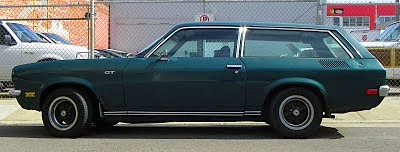
(1973 GMC Chevy Vega Kammback GT Wagon. Photo Socotra.)
The Chevy Vegas were an answer to a question posed by the fellows at OPEC, and they were thrown together at the GM Assembly plant at Lordstown, just west of East Gate on the Turnpike in Eastern Ohio. I see the plant every time I drive up to Michigan, but it was far enough from Detroit that I could not get down there to see them put the Kammback GT Wagon together. There was a school of thought that if you actually were following your prospective ride along the assembly line it would improve the quality of the vehicle.
Stupid, I know, but I heard of people who watched their Mustangs being built at the Dearborn Assembly Plant-or D.A.P., as it is affectionately known at Ford’s. They built the pony car there since 1964, a run of 40 years, in good and bad times. 1973 was a bad year for Mustang, as it was for all the Hot Wheels line of performance vehicles. Gas cost too much.
I still think my Vega was a good-looking car. Certainly it was better than the competition, the Ford Pinto, which later was memorialized as the poster vehicle for bad fuel tank placement.
Lee Iacocca was the driving force behind the development of the Pinto, and there was a massive fight in upper management when Arjay Miller was kicked upstairs to be Vice Chairman of Ford’s Board, and Henry Ford the Deuce went outside the company to bring in Semon “Bunkie” Knudsen in to run things instead of elevating Lee, who was Executive VP of North American Vehicle Operations.
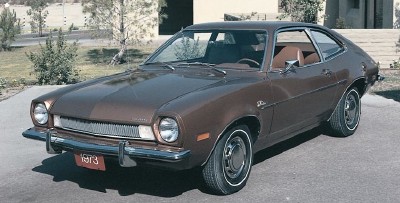
People like me were a growing component of the domestic market. We didn’t have much in the way of disposable income, and Iacocca saw what we were driving: VW Beetles and those strange little Japanese imports. Knudsen and Iacocca had dramatically differing world views, and in the end it was the Oil Sheikhs who determined that Lee was right and Bunkie was wrong.
The Pinto- and the Vega competition- were based on the proposition of the rule of “2.” The cars ought not to cost more than $2,000 and not weigh more than 2,000 pounds. They had to be fast enough to drive on the interstates but easy on the wallet for maintenance. There was nothing really fancy about the Pinto. Its main goals were to provide reasonable comfort and adequate performance.
“Adequate” being a sort of anemic four-cylinder replacement to the MoPar screaming V8 Hemis of just a couple years before.
The lines on my Vega were sleek: ’73 was the last year the Feds did not require those ugly rubber energy-absorbing bumpers, which were ugly as sin and didn’t really catch up with the rest of the design for years. The mini-wagon design flowed nicely and gave a lot of room to throw stuff in the back, sleeping bags and old liquor boxes filled with LPs and college textbooks for the job.
The 1973 Vega model year featured over 300 changes from the 1972 model year, and they needed most of them, including new exterior and interior colors and new standard interior trim. I ordered the tan interior and British racing green for the exterior paint, and had every intention of highlighting the snout with some after-market Cooper yellow for emphasis that I never got around to applying.
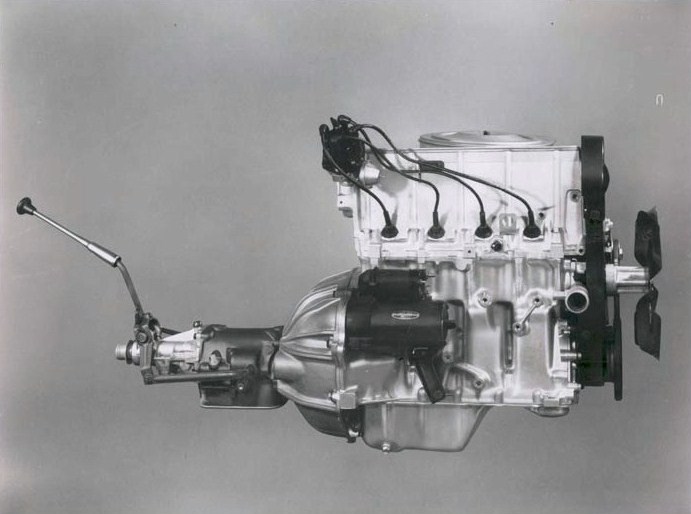
The four-speed manual shifter was from Saginaw Steering Gear, and a new shift linkage replaced the Opel-built units that GM imported from their European subsidiary. The L-11 engine featured a new Holley staged two-barrel carburetor, but the engine itself was the problem, not the solution, of the Gas Crisis.
I specified the BR70-13 white-stripe steel belted radial tires on my order and thought I was pretty cool rolling down Woodward or the Cass Corridor in my little car. It was quite a change from the muscle beasts in which we learned to drive. Small was beautiful in the days of the even-odd gas lines, a thoroughly un-American restriction on our traditional ability to drive anywhere at any time.
Much as I liked it, the Vega was a piece of crap. It burned half a quart of oil for every tank of gas, just like clockwork. It was not shoddy workmanship, though, it was the simple fact that the Vega engine was not ready for prime time, which was true of the whole industry that year.
GM Research Labs had been working on a sleeveless aluminum block since the late ’50s. The incentive was cost. Engineering out the four-cylinder block liners would save $8 per unit. Reynolds Metal Co. developed a custom alloy suitable for faster production die-casting.
The Sealed Power Corp. developed chrome-plated piston rings specially blunted to prevent scuffing. It might have been a successful design, with a little more time for development, but the OPEC embargo prevented that. Demand for fuel efficiency was suddenly really important and the engine was rushed into production.
Who could have imagined that V-8 powered Detroit would suddenly have an immediate and pressing need for four cylinder engines?
I tried driving 55 on I-75 the morning after President Nixon announced how important it was that we conserve energy. I was nearly run over by a Buick hurtling toward the Livernois exit. I was so young that I took things the President said seriously.
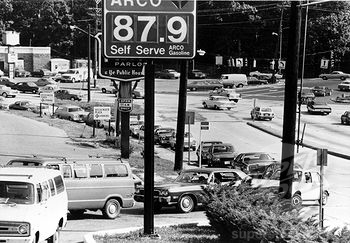
After that, I preferred to motor more sedately down Cass when I visited the Wayne State University campus as a textbook salesman for the McGraw-Hill Book Company, my first real job after college.
Cass Avenue runs parallel to Woodward, which is the golden road out to where white Detroit was fleeing, out toward Grabbingham and Bloomfield Hills and the mansions of the car people. Cass runs from Congress Street, ending a few miles further north at West Grand Boulevard.
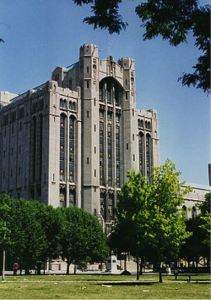
(Detroit’s famed Masonic temple. Photo Wikipedia.)
Significant landmarks along the fourteen blocks that constituted the Corridor included the Detroit Masonic Temple, which looks like a church but is actually the world’s largest Masonic structure, sadly down at the heels now, and Cass Technical High School and the small but densely-packed Chinatown. The architecture was 1930s-industrial, for the most part, interspersed with low apartment buildings and tons of bars and restaurants.
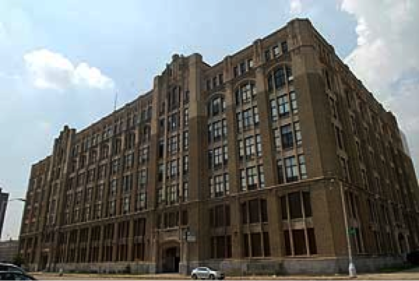
(Cass Tech High School’s old building.)
In 1973 the city was not dead yet. The Corridor reflected the tipping point of the population that was shortly going to be overwhelmingly African American. I was out in the maid’s quarters of a mansion in Palmer Park off Woodward. Closer to downtown, the neighborhoods around Cass Avenue featured hangers-on from the great Appalachian migration that came to work in the Defense plants during the war, and there were newer pockets of Hindus and Native Americans, burned-out hippies, students from Wayne State and single-moms struggling to raise their kids.
Immigrants from India, Pakistan, China, Korea and the Philippines were part of the mix. Many worked at the Detroit Medical Center, a group of hospitals just across Woodward Avenue.
Detroit’s small Chinatown was located at Cass and Peterboro in the southern end of the Corridor, and there was often a wait for tables at lunch at the Chinese restaurants, if you can imagine that now.
That was during the day. The proximity of Cass to Woodward, Detroit’s main artery, had made Cass the logical area for the local authorities to push local drug activity, prostitution, and general civic indecencies away from the downtown.
Long-legged, high-heeled hookers prowled the sidewalks outside world-class dive bars like Jumbos, The Sweetheart, Willis Show Bar and Anderson’s Gardens. The Gold Dollar Show Bar advertised “Female Impersonators Nightly.”
Crazy was OK. Prime-time sidewalk shows featured the working ladies who would flash their breasts at the Johns driving in from the suburbs, their pimps, winos, scammers, dopers and dealers.

The bars- particularly Anderson’s Garden, all paid for active police protection, and despite the seedy nature of the neighborhood, I never felt bad about going down and hanging out. I used to love to take visiting Book Company people down to the Corridor when they came to look at my territory. It gave them a thrill, but I knew the place was 100% safe.
At least it was then. As inauguration day rolled around for Coleman Young, and as Dick Nixon lurched through the last anguished days of his presidency, things were about to take a dramatic change, courtesy of the scourge of crack cocaine. But that was just another step toward the abyss, and frankly, we were worried about other things at the time.
The Cass Corridor was sort of the anti-Woodward: you couldn’t mistake me in my green Vega for the preppie Grabbingham kid in the screaming red Charger R/T 440, that was for sure.
Copyright 2014 Vic Socotra
www.vicsocotra.com
Twitter: @jayare303
A Stone on the Bank of the Big Ass River

(The District Boundary Stones. I have a great deal of admiration for the people who hacked out the forty miles of underbrush to place them. 36 are still in the ground, and I am short of visiting only one of them).
Shortly after my life took a dramatic new course in 2001, I started a little project that is still incomplete, but so close to accomplishment that it periodically rises to the level of a minor obsession.
I will give you the shorthand version here, since one of these days I will put the whole narrative together for you. The first National Monuments of the young Republic were the commissioning of the Boundary Stones that delineate the Federal Enclave of the District of Columbia. Surveyed by Major Andrew Ellicott and freeman Benjamin Baneker, a sandstone marker was placed each statute mile, with the cardinal stones South, West, North and East slightly being slightly more imposing markers.
There are 36 of the original 40 stones still in the ground in wildly varying conditions. Seeing the ones on the SE side is a challenge in access and personal safety!
The Potomac is one big ass river as it opens up south of the Bluefields water treatment plant. It is broad and brown and probably unhealthy, and it is wild and tangled along the banks where trees and trash are piled willy-nilly, making land transit problematic.
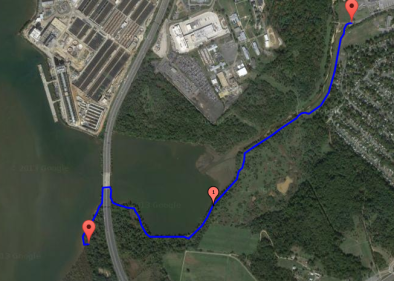
(The overland route to SE-9. We made it to the highway bridge, and the path was impenetrable).
Argo and I had tried to find District Stone SE9 in the Spring. It looked simple enough from the overhead imagery- Oxen Hill Farm had relatively secure parking, and a path down the bluff to the forest. In the execution it was brutal- hard to imagine the wilderness that exists inside the limits of the District, fallen trees and clinging vines and uncertain footing. And all sorts of detritus washed down from the city in the periodic surges of rainfall that sweep all before it into the flow.
So, we decided the next attempt would be by boat, and there is a rental concession for kayaks that opened at National Harbor and Argo was in town, and it seemed like a natural- EZ in, EZ out.
Not so fast.
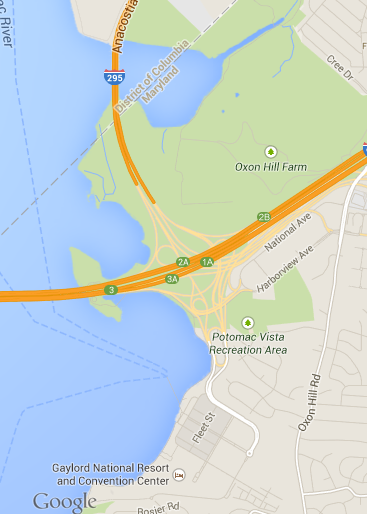
We negotiated the kayak rental from a surly fellow at the Gaylord National Resort and Convention center. We shoved off from there after a cursory safety briefing and paddled to the north, battling the current and a strong quartering breeze.
There were no whitecaps but it was only just short of that. We got across the lagoon and under the Woodrow Wilson Bridge and then tried to hug the coast to avoid the massive pressure of all that water pouring down to the sea.
We got disoriented- the low freeboard of the boat meant we were wet and our phones were useless in their little plastic bags, and the shore was a wild tangle of logs and drifted debris, but we turned in a cove short of where we needed to be.
We were watching a police boat watching us when Argo suggested we beach the boat and go ashore.
We would have been on the wrong side of the cove, and based on the terrain and the tangled mass of logs and trash, I said “I surrender. No more injuries and no more surgery.”
We backed around and paddled along the shore dodging logs and rocks. It was a lot easier going back down the majestic river with the current- and it was a nice outing even if a failure. I don’t do enough adventures these days but I am still determined to avoid getting hurt again.
I will figure out a way to see that stone. Looking at the map, it appears that we were almost there- but of course we were unprepared. If we had printed and laminated the below image we would have done it:
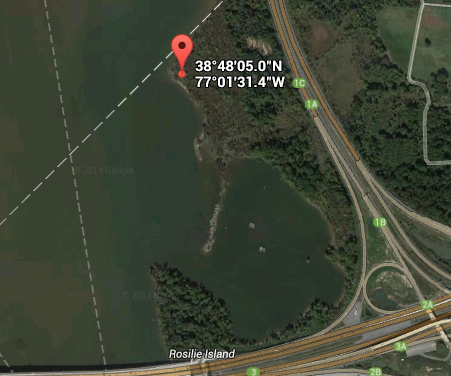
We turned into the cove just north of the point of Rosalie island. Oh well.
Next time I will just charter a boat with a motor. I know it is possible- I have seen the picture of the stone. But it is something altogether different in visiting it in person. Forward!
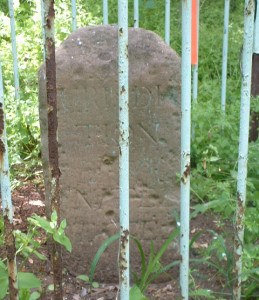
Copyright 2014 Vic Socotra
www.vicsocotra.com
Twitter: @jayare303
